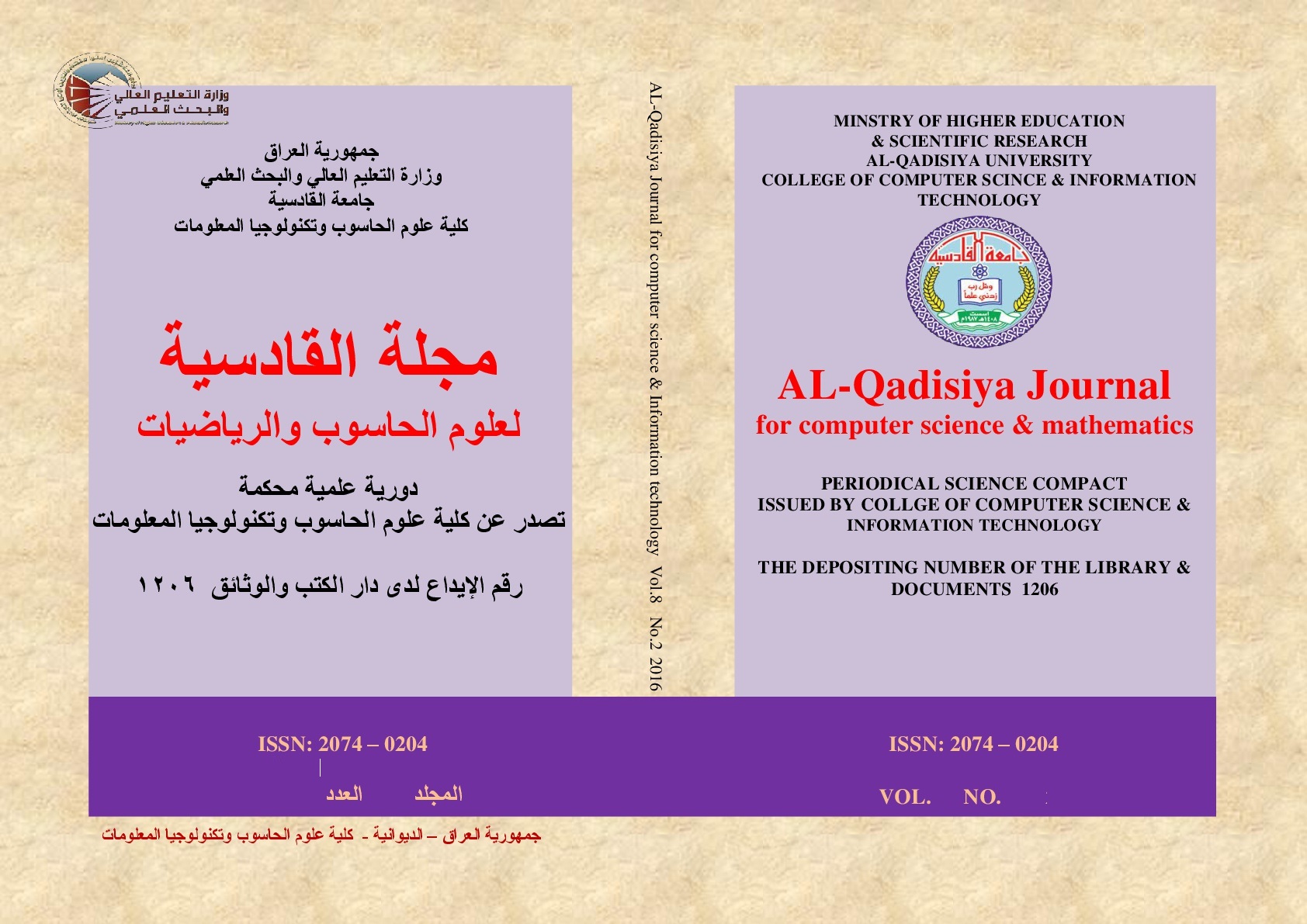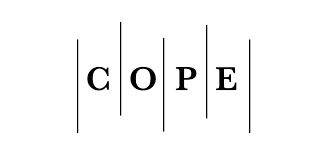A New Adaptive Method for Solving Neuron Cells Problem of Hodgkin-Huxley and Estimating Parameters
DOI:
https://doi.org/10.29304/jqcsm.2024.16.41798Keywords:
Hodgkin–Huxley model, Adaptation algorithm design, Speed gradient method, Lyepunov functions, Parameter estimationAbstract
In this paper, a new adaptive parametrization model of fourth order neuron cells model of Hodgkin-Huxley (HH) is introduced. The adaptation algorithm design or as can be called adaptive identification algorithm of parameters of the neuron cells HH model is produced. This algorithm is theoretically and computationally proved. This introduced algorithm is basically based on Lyepunov functions and adaptive observer methods which may prove the stability of the model to obtain unique solutions. The results of the computer simulation of the identification problem are shown in the figures and the parameters are clearly coincide the real values. Some terms of the problem are defined for the measured data. It provides an observation model to determine the most informative data for a specific parameter, and find the best fit model. In the HH model of neural cells, the consistency of the differential equations of the adaptation model with the observers of cell’s activation is shown by fitting the observed data to the real data within the high accuracy of estimating the parameters.
Downloads
References
Turnbull S. Design criteria for a global brain. InFirst Global Brain Workshop (Gbrain O) Vrije Universiteit Brussei, Brussels, Belguim, Thursday 2001 Jul 5. http://dx.doi.org/10.2139/ssrn.283715
Kringelbach ML, Deco G. Brain states and transitions: insights from computational neuroscience. Cell Reports. 2020 Sep 8;32(10). https://doi.org/10.1016/j.celrep.2020.108128
Huang Z, Zhang J, Wu J, Mashour GA, Hudetz AG. Temporal circuit of macroscale dynamic brain activity supports human consciousness. Science advances. 2020 Mar 11;6(11): eaaz0087. DOI: 10.1126/sciadv.aaz0087
Cofré, R.; Herzog, R.; Mediano, P.A.; Piccinini, J.; Rosas, F.E.; Sanz Perl, Y.; Tagliazucchi, E. Whole-brain models to explore altered states of consciousness from the bottom up. Brain Sci. 2020, 10, 626. https://doi.org/10.3390/brainsci10090626
Koravuna S, Rückert U, Jungeblut T. Evaluation of Spiking Neural Nets-Based Image Classification Using the Runtime Simulator RAVSim. International Journal of Neural Systems. 2023 Aug 17:2350044. https://doi.org/10.1142/s0129065723500442
Wang N. Modeling and Simulation Methods of Neuronal Populations and Neuronal Networks (Doctoral dissertation).2021. https://dx.doi.org/10.7302/2885
Borisenok S. Detection and Control of Epileptiform Regime in the Hodgkin–Huxley Artificial Neural Networks via Quantum Algorithms.2022. https://ipme.ru/upload/001/u106/5/5/cap24-1-3-gromov.pdf
Zhou S, Peng X, Lin W, Mao X. Adaptive control and synchronization of complex dynamical systems with various types of delays and stochastic disturbances. SIAM Journal on Applied Mathematics. 2024 Aug 31;84(4):1515-31. https://doi.org/10.1137/24M1639440
Dayani Z, Parastesh F, Nazarimehr F, Rajagopal K, Jafari S, Schöll E, Kurths J. Optimal time-varying coupling function can enhance synchronization in complex networks. Chaos: An Interdisciplinary Journal of Nonlinear Science. 2023 Mar 1;33(3). https://doi.org/10.1063/5.0142891
Satheesh T, Sakthivel R, Aravinth N, Karimi HR. Unified synchronization and fault‐tolerant anti‐disturbance control for synchronization of multiple memristor‐based neural networks. International Journal of Robust and Nonlinear Control. 2024 Mar 10;34(4):2849-64. https://doi.org/10.1002/rnc.7112
Mohammed JA, Tyukin I. Explicit parameter-dependent representations of periodic solutions for a class of nonlinear systems. IFAC-PapersOnLine. 2017 Jul 1;50(1):4001-7. https://doi.org/10.1016/j.ifacol.2017.08.714
Centofanti E, Ghiotto M, Pavarino LF. Learning the Hodgkin-Huxley Model with Operator Learning Techniques. arXiv preprint arXiv:2406.02173. 2024 Jun 4. https://doi.org/10.48550/arXiv.2406.02173
Abarbanel HD, Bryant P, Gill PE, Kostuk M, Rofeh J, Singer Z, Toth B, Wong E, Ding M. Dynamical parameter and state estimation in neuron models. The dynamic brain: an exploration of neuronal variability and its functional significance. 2011 Sep. https://link.springer.com/article/10.1007/s00422-011-0459-1
Fröhlich F, Jezernik S. Feedback control of Hodgkin–Huxley nerve cell dynamics. Control engineering practice. 2005 Sep 1;13(9):1195-206. https://doi.org/10.1016/j.conengprac.2004.10.008
Kistler WM, Gerstner W, Hemmen JL. Reduction of the Hodgkin-Huxley equations to a single-variable threshold model. Neural computation. 1997 Jul 1;9(5):1015-45. https://doi.org/10.1162/neco.1997.9.5.1015
Rodríguez-Collado A, Rueda C. A simple parametric representation of the Hodgkin-Huxley model. Plos one. 2021 Jul 22;16(7):e0254152. https://doi.org/10.1371/journal.pone.0254152
Bougandoura O, Achour Y, Zaoui A. Electroporation in Cancer Therapy: A Simplified Model Derived from the Hodgkin–Huxley Model. Bioelectricity. 2024 Apr 19. https://doi.org/10.1089/bioe.2023.00
Sokol M, Baker C, Baker M, Joshi RP. Simple model to incorporate statistical noise based on a modified hodgkin-huxley approach for external electrical field driven neural responses. Biomedical Physics & Engineering Express. 2024 May 23. DOI https://doi.org/10.1088/2057-1976/ad4f90
Al-Ameri JM. Explicit Representations of Periodic Solutions of Nonlinearly Parameterized Ordinary Differential Equations And Their Applications To Inverse Problems (Doctoral dissertation, University of Leicester).2018. https://figshare.le.ac.uk/articles/thesis/Explicit_Representations_Of_Periodic_Solutions_Of_Nonlinearly_Parameterized_Ordinary_Differential_Equations_And_Their_Applications_To_Inverse_Problems/10208618
Wang YC, Sinha N, Rudi J, Velasco J, Idumah G, Powers RK, Heckman CJ, Chardon M. Algorithmic Parameter Estimation and Uncertainty Quantification for Hodgkin-Huxley Neuron Models. bioRxiv. 2021 Nov 20:2021-11. DOI: https://doi.org/10.1101/2021.11.18.469189
Fradkov A.Cybernetical physics: from control of chaos to quantum control. Springer; 2007 Jun 30. https://books.google.iq/books?hl=en&lr=&id=nE4boHiXtjYC&oi=fnd&pg=PA1&dq=Fradkov,+A.L.+Cybernetical+Physics:+From+Control+of+Chaos+to+Quantum+Control%3B+Springer:+Berlin/Heidelberg,+Germany,+2007.&ots=V__Xe-XXqV&sig=- 0RZDCXDbkvOPYnUD2QoZtGcIc&redir_esc=y#v=onepage&q&f=false
Andrievsky BR, Churilov AN, Fradkov AL. Feedback Kalman-Yakubovich lemma and its applications to adaptive control. In Proceedings of 35th IEEE Conference on Decision and Control 1996 Dec 13 (Vol. 4, pp. 4537-4542). IEEE. DOI: 10.1109/CDC.1996.577581
Hassard B. Bifurcation of periodic solutions of the Hodgkin-Huxley model for the squid giant axon. Journal of Theoretical Biology. 1978 Apr 6;71(3):401-20. https://doi.org/10.1016/0022-5193(78)90168-6
Fradkov AL, Miroshnik IV, Nikiforov VO. Nonlinear and adaptive control of complex systems. Springer Science & Business Media; 2013 Jun 29. https://books.google.iq/books?hl=en&lr=&id=jGL_CAAAQBAJ&oi=fnd&pg=PR11&dq=Fradkov,+A.L.%3B+Miroshnik,+I.V.%3B+Nikiforov,+V.O.+Nonlinear+and+Adaptive+Control+of+Complex+Systems%3B+Mathematics+and+Its+Applications%3B+Springer:+Dordrecht,+The+Netherlands,+1999%3B+Volume+MAIA+491.+&ots=JC-j03x9wm&sig=tfylp-eA1XxUOmaDWQUT611z43A&redir_esc=y#v=onepage&q&f=false.
Downloads
Published
How to Cite
Issue
Section
License
Copyright (c) 2024 Bushra Muhammad Alkhalifa, Jehan Mohammed Khudhir

This work is licensed under a Creative Commons Attribution-NonCommercial-NoDerivatives 4.0 International License.













